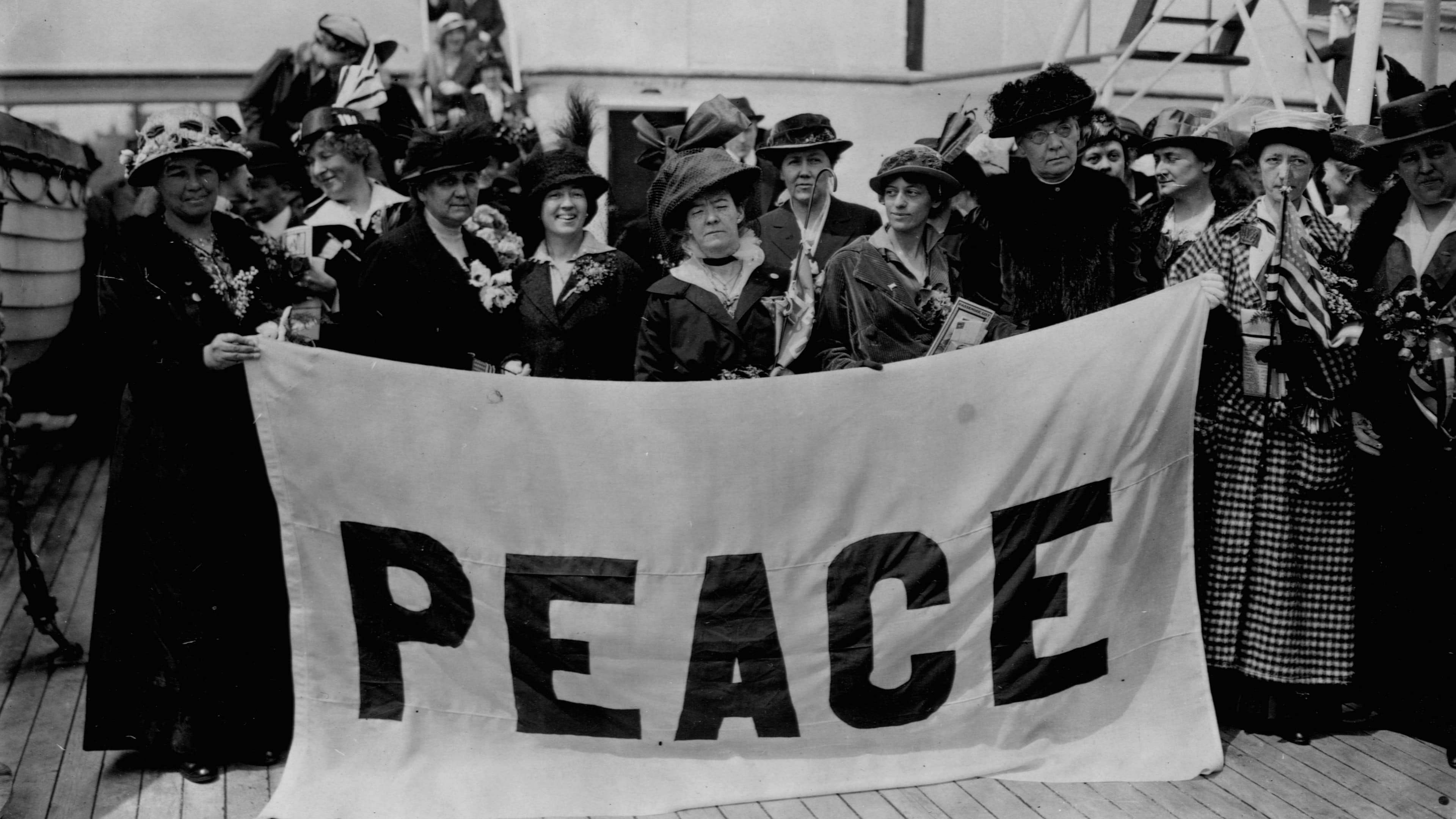On May 1, 1915 in The Hague, Netherlands, the International Congress of Women adopts its resolutions on peace and women’s suffrage.
The congress, also referred to as the Women’s Peace Conference, was the result of an invitation by a Dutch women’s suffrage organization to women’s rights activists around the world to gather in peaceful assemblage during one of the most divisive and intense international conflicts in history: World War I. It included more than 1,200 delegates from 12 countries—including Britain, Germany, Austria-Hungary, Italy, Poland, Belgium and the United States.
Starting with two basic assertions—that international disputes should be handled by pacific means and that women should have the right to exercise their own vote in government—the International Congress of Women called for a process of continuous mediation to be implemented, without armistice, until peace could be restored among the warring nations. By continuous mediation, the delegates meant that a conference of neutral nations should be convened that would invite suggestions for settlement from each of the belligerent nations and submit to all of them simultaneously, reasonable proposals as a basis of peace.
Their resolutions, announced at the close of the congress on May 1, endorsed measures designed for international cooperation, including an international court and a so-called Society of Nations, general disarmament and national self-determination. The delegates included a specific call for women to be given the vote: Since the combined influence of the women of all countries is one of the strongest forces for the prevention of war, and since women can only have full responsibility and effective influence when they have equal political rights with men, this International Congress of Women demands their political enfranchisement.
The congress founded the Women’s International League for Peace and Freedom (WILPF), an organization that still exists today. The first president of the WILPF was Jane Addams, the leader of the American delegation to the congress and the co-founder of the Chicago social service organization Hull House. Addams and other delegates met with U.S. President Woodrow Wilson during the summer of 1915, knowing that the success of their plan depended to a great extent on the president’s agreement to initiate and lead mediation between the hostile nations of Europe. Though Wilson was sympathetic to the proposals of the congress, he eventually moved away from the principles of mediation and towards military preparedness (and eventual U.S. entrance into the war in April 1917).
Printed in English, French and German, the resolutions of the International Congress of Women were distributed to European heads of state in early May 1915. The congress also determined that a delegation of women would be sent to meet with representatives of the belligerent governments to plead the cause of continuous mediation. To that end, 30 delegates toured Europe between May and June 1915; though its arguments did little to sway the leaders of the warring nations, the proposals introduced by the congress are still used today as guidelines for many diplomatic negotiations between hostile nations.
